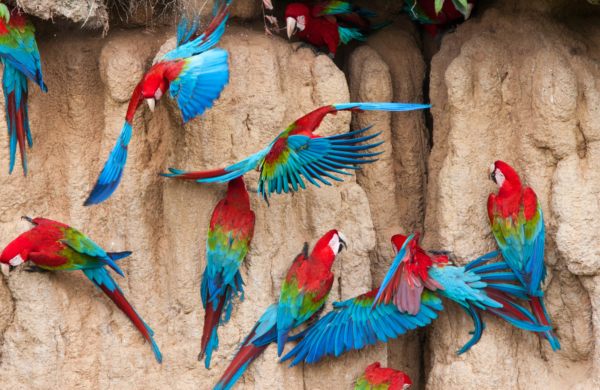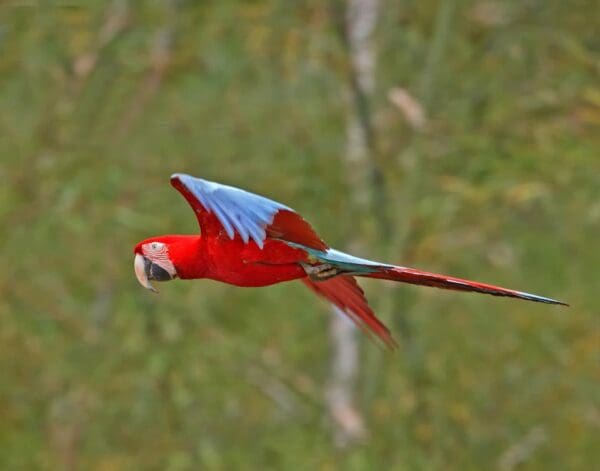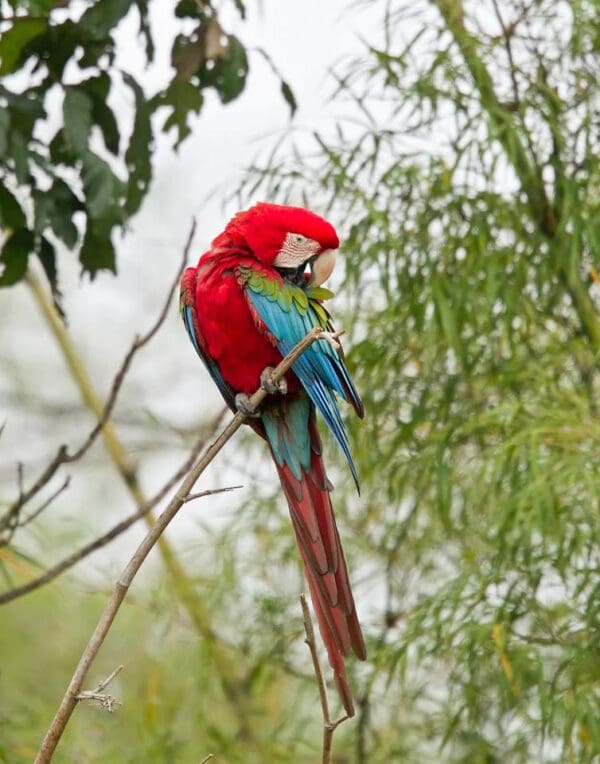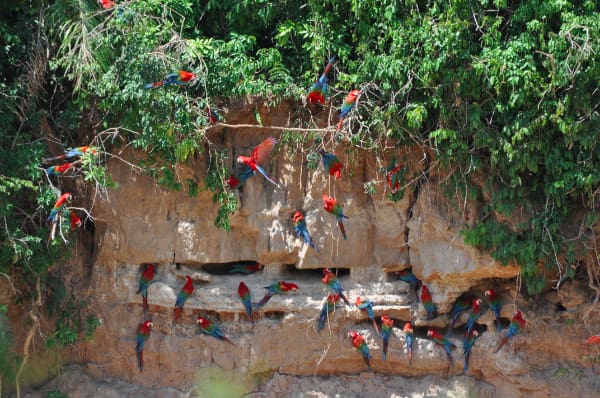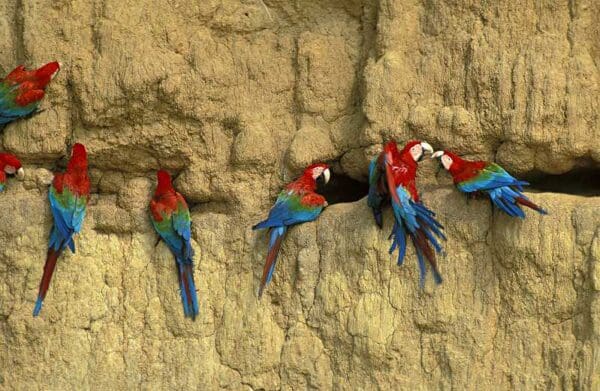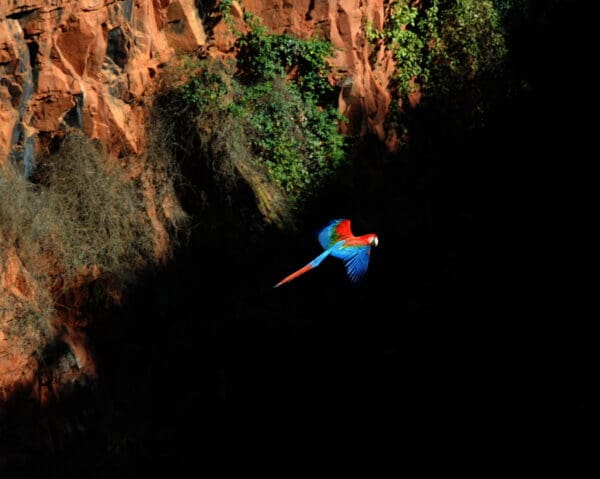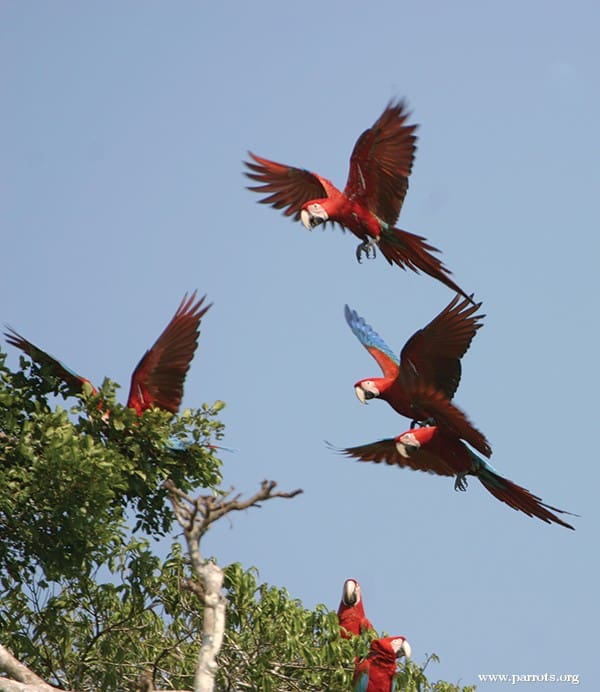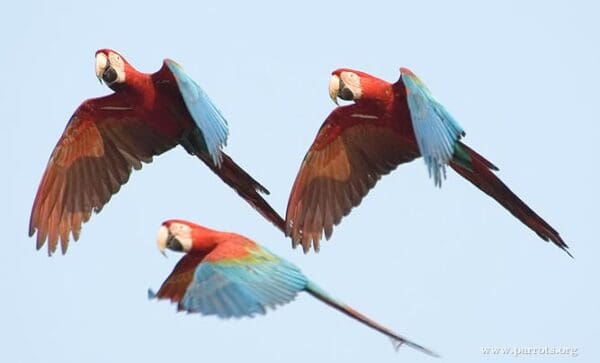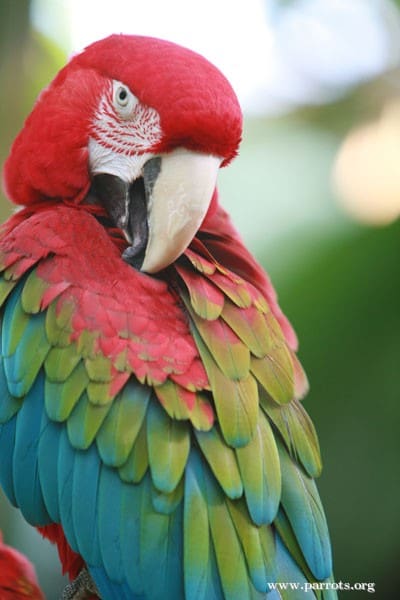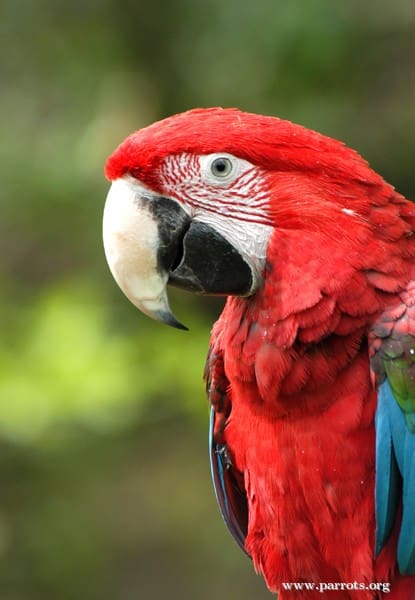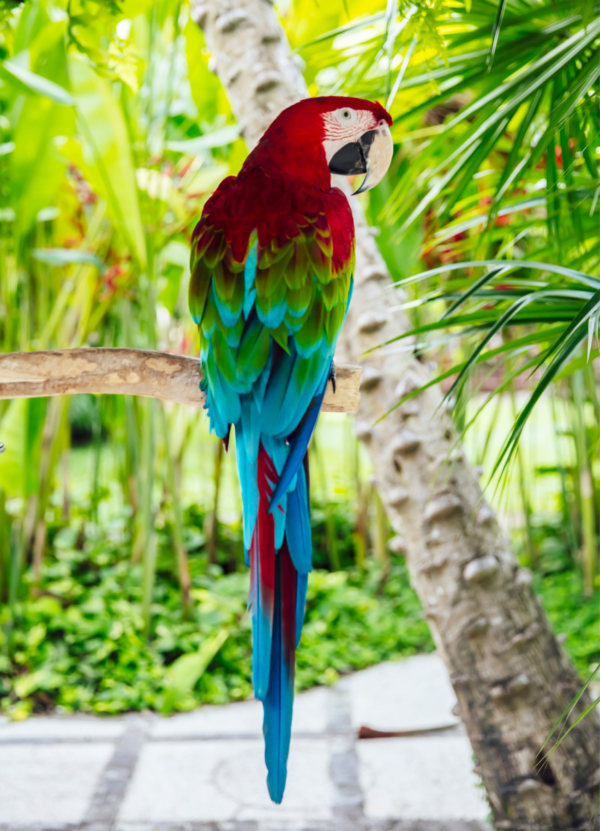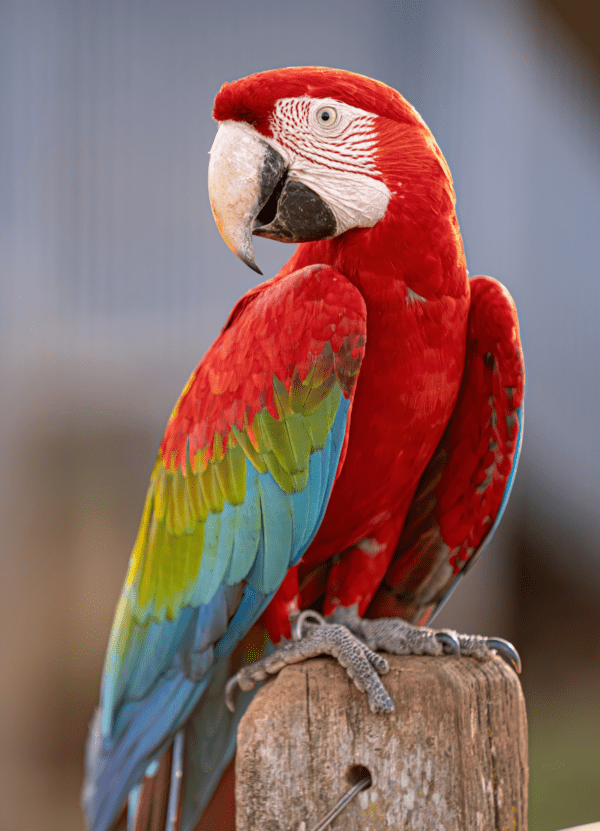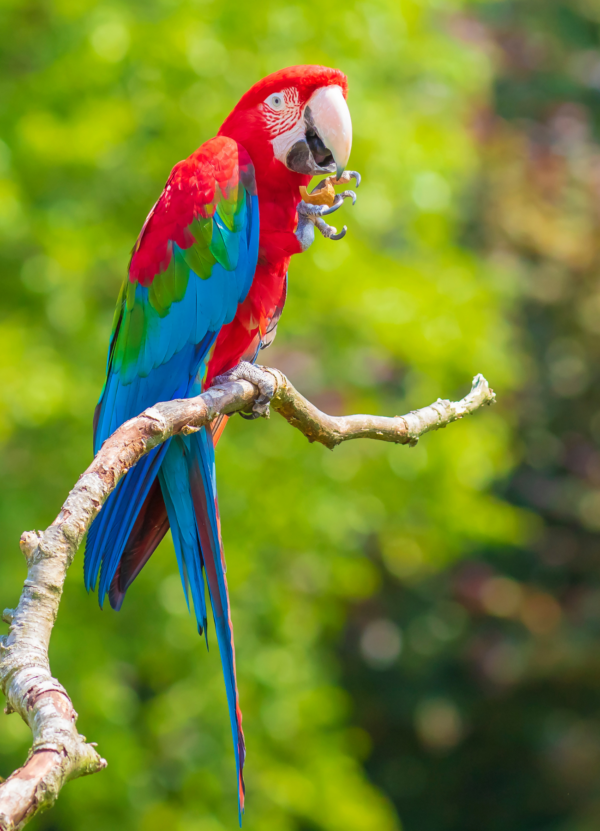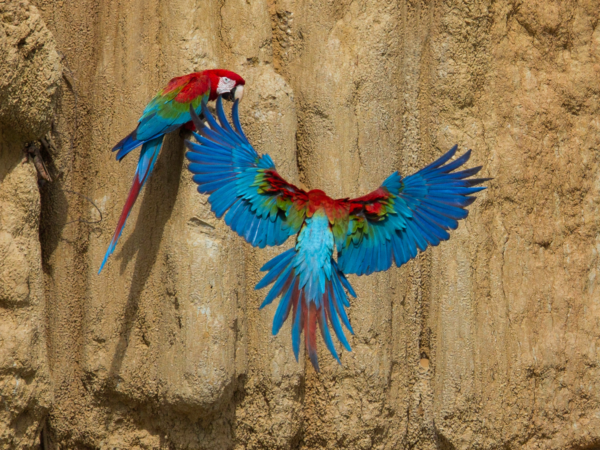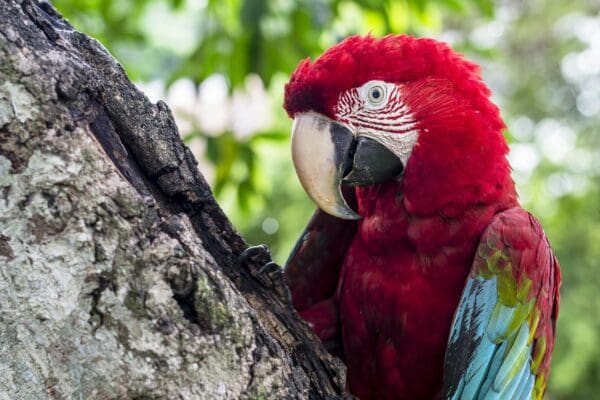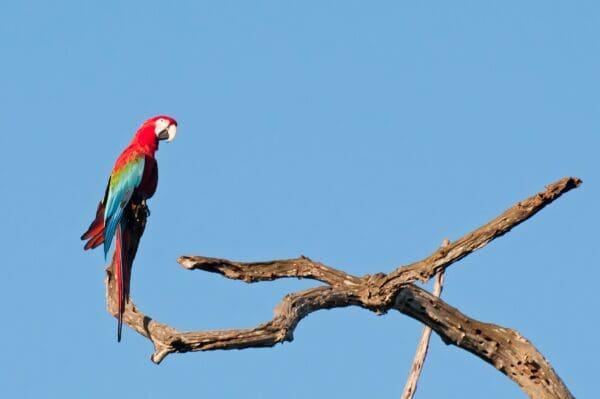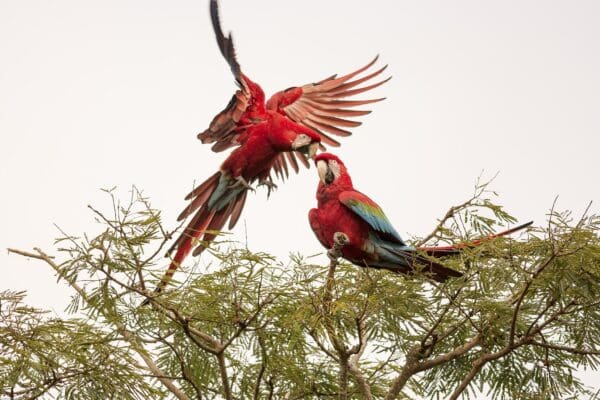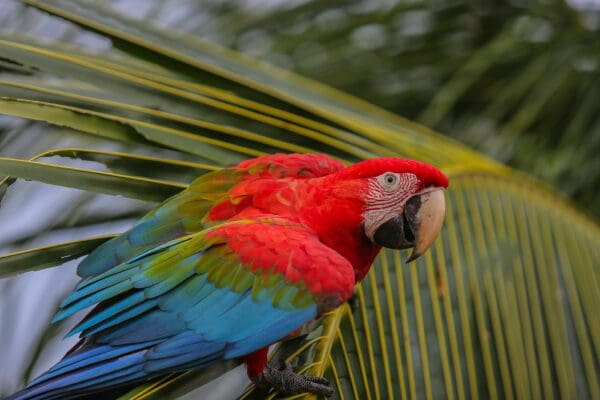Red-and-green Macaw
Also known as:
Green-winged Macaw, Red-and-blue Macaw, Red-blue-and-green Macaw
Also known as:
Green-winged Macaw, Red-and-blue Macaw, Red-blue-and-green Macaw
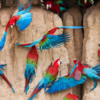
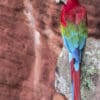
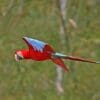
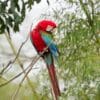
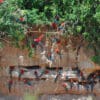
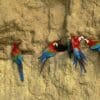
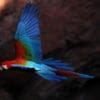
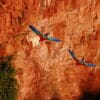
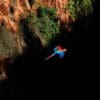

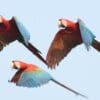
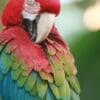
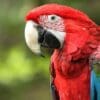
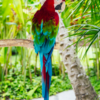
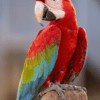
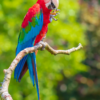
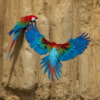
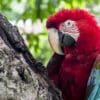
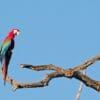
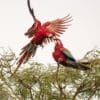
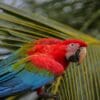
DID YOU KNOW?
The Red-and-green Macaw is a darker shade of red than the similar Scarlet Macaw, and has a shorter tail.

Ara

chloropterus
Size:
90 cm (35 in)
Weight:
1050-1320 g (36.75-46.2 oz)
Subspecies including nominate:
one
Colour Adult:
Both adults dark red in general; green middle wing coverts, scapulars and tertiary feathers; back, rump and tail coverts blue; blue tail with red tips. Upper mandible horn in colour with black on sides; lower beak grey/black. Cere bare and face white with evident red lines of feathers. Eye yellow.
Colour Juvenile:
Immature as in adult but with shorter tail. Lower mandible grey with white at base. Eye grey.
Call:
Strong voice but usually less harsh than Scarlet Macaw (Ara macao). Some calls low and strident; in flight prolonged. Other calls include yelping and cawing, or shrieking.
More Information:
Content Sources:
CITES
BirdLife International
Cornell Lab of Ornithology/Birds of the World
A Guide to Parrots of the World, Juniper and Parr, 1998
Parrots of the World, Forshaw and Cooper, 1989. 2010 edition
Parrots of the World, Forshaw, 2006.
Parrots in Aviculture, Low, 1992.
Psittacine Aviculture, Schubot, Clubb and Clubb, 1992.
Avian Pediatric Seminar Proceedings, various authors, 1988.
Captive Status:
Widespread in captivity.
Longevity:
60 yrs
Housing:
Should have access to a large enclosure, 15 m (49 ft) long in which to fly for part of the year.
Diet:
Soaked or sprouted sunflower seed; walnuts, peanuts, pecans, Brazil nuts, pine nuts; corn on the cob, banana, orange and other fruits. Complete kibble for Macaws.
Enrichment:
Large macaw toys, chewables (fir branches, heat sterilized pine cones, bird-safe, unsprayed wood), large perches, swings, ladders; regular bathing.
Nest Box Size:
Horizontal box, 16″ x 16′ x 48″ (40.6 cm x 40.6 cm x 122 cm) or 35 gallon pickle barrel, or 55 gallon barrel.
Clutch Size:
2 to 3
Fledging Age:
Around 100 days.
Hatch Weight:
—
Peak Weight:
—
Weaning Weight:
—
World Population:
50,000-500,000 mature individuals. Undergoing a large, significant decline.
IUCN Red List Status:
Least Concern
CITES Listing:
Appendix II
Threat Summary:
The species is fairly common; has declined at edges of range. Still widespread in Surinam. Affected by loss of habitat, uncontrolled hunting and unsustainable exploitation for trade.
Range:
E Panama and South America south to N Argentina. Formerly west to Caribbean slope; tropical zone of Colombia; lowland Venezuela; interior of Guianas; throughout Amazon basin of Brazil, eastern Ecuador, Peru and NE Bolivia. In Brazil, Mato Grosso and western Sao Paulo. Northern and eastern areas of Paraguay.
Habitat:
Found in rainforest in north of range; in south more in drier, more open areas including floodplain forest, upland forest and dry woodland. Needs large trees for nesting. Found up to 1000 m (3280 ft) in Panama, 500 m (1640 ft) in Colombia, 1400 m (4592 ft) in Venezuela.
Wild Diet:
Forages for seeds of Jacaranda, Tetragastris, Sclerolobium, Hymenaea, Copaifera, Caryocar, Hevea, Eschweilera, Guarea, Abuta, Euterpe, Maximiliana, Micropholis, Sterculia, Spondias, Terminalia, Sapium, Croton, Parkia, the pulp of Inga, Quararibea, Rheedia, Eperua, Dipteryx, Schwartzia, Borismene, Sorocea, Mauritia, the fruits of Endopleura, and Bertholletia, the endosperm of Scheelea, arils of Virola, and the leaves of Erythrina.
Ecology and Behaviour:
Forages for food in canopy. Nests in large tree cavities but also crevices in cliff faces. Generally in pairs or small flocks; less inclined to large congregations like Scarlet Macaws, but will associate with these and Blue-and-yellow Macaws.
Clutch and Egg Size:
2 to 3 elliptical eggs, 50 x 35 mm (2 x 1.4 in).
Breeding Season:
November-April in Peru; January in C Brazil; December Surinam. Nests are in tree cavities or sandstone cliffs (Bolivia) and riverbanks (S Brazil).
Related Links:
—
